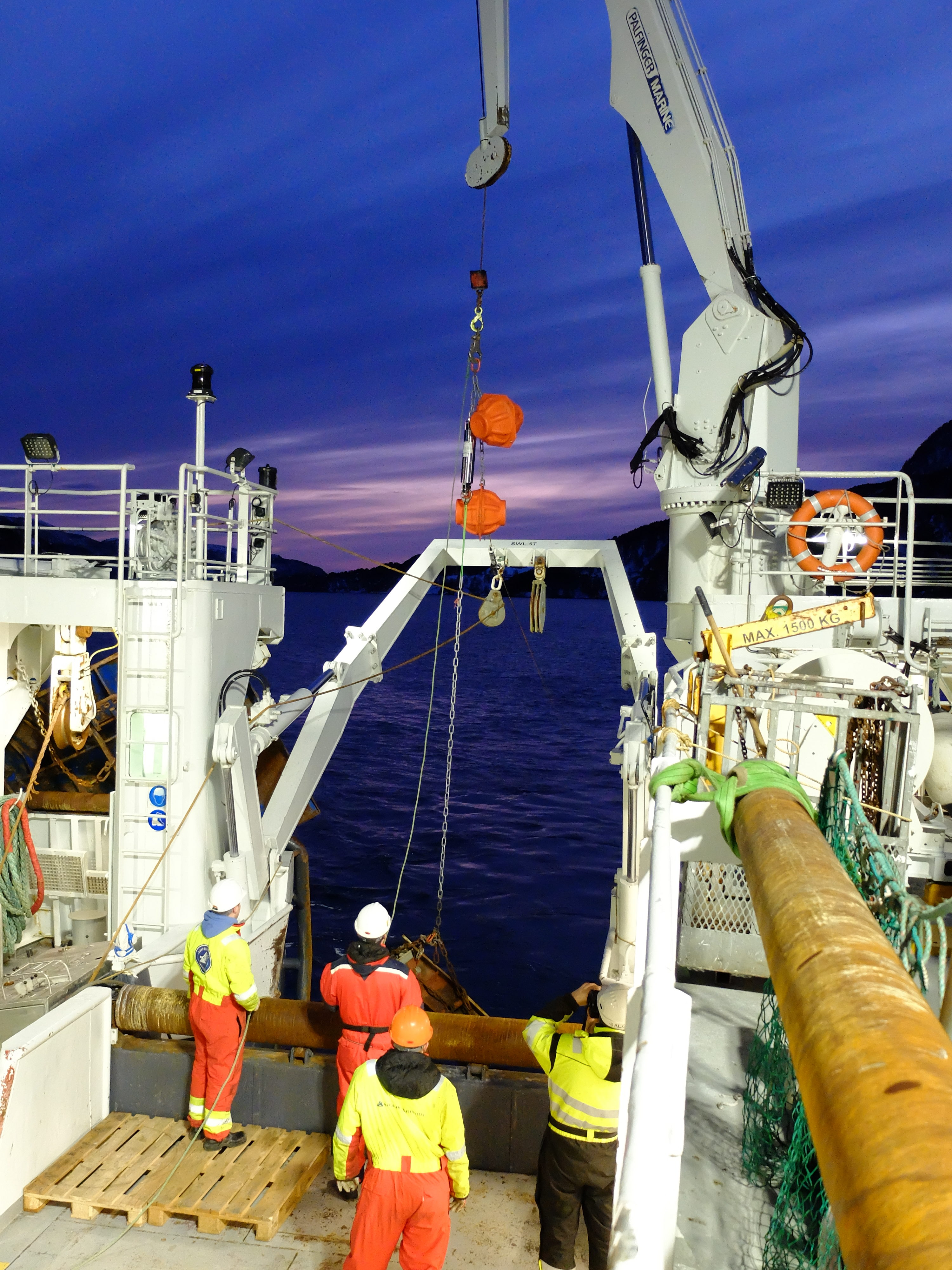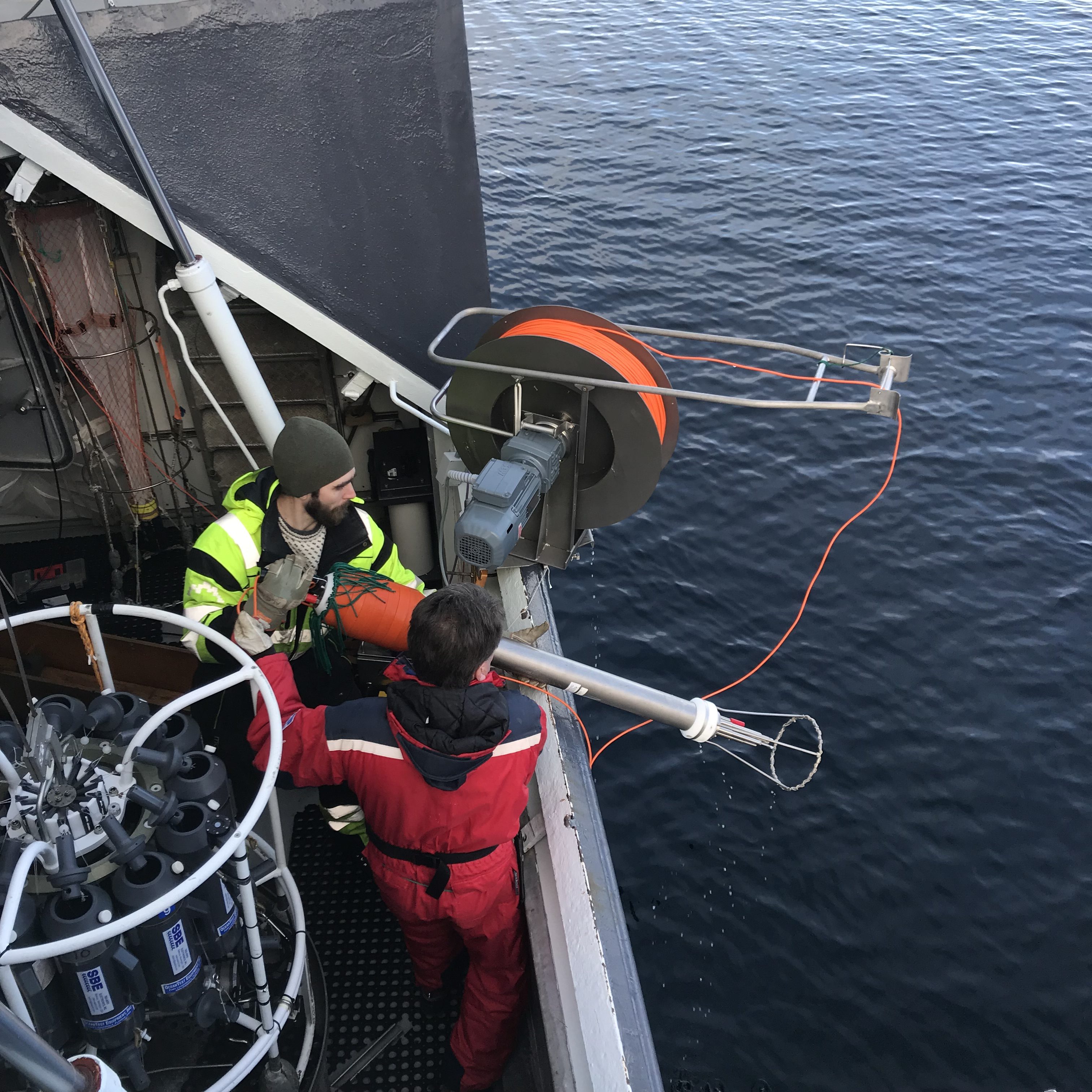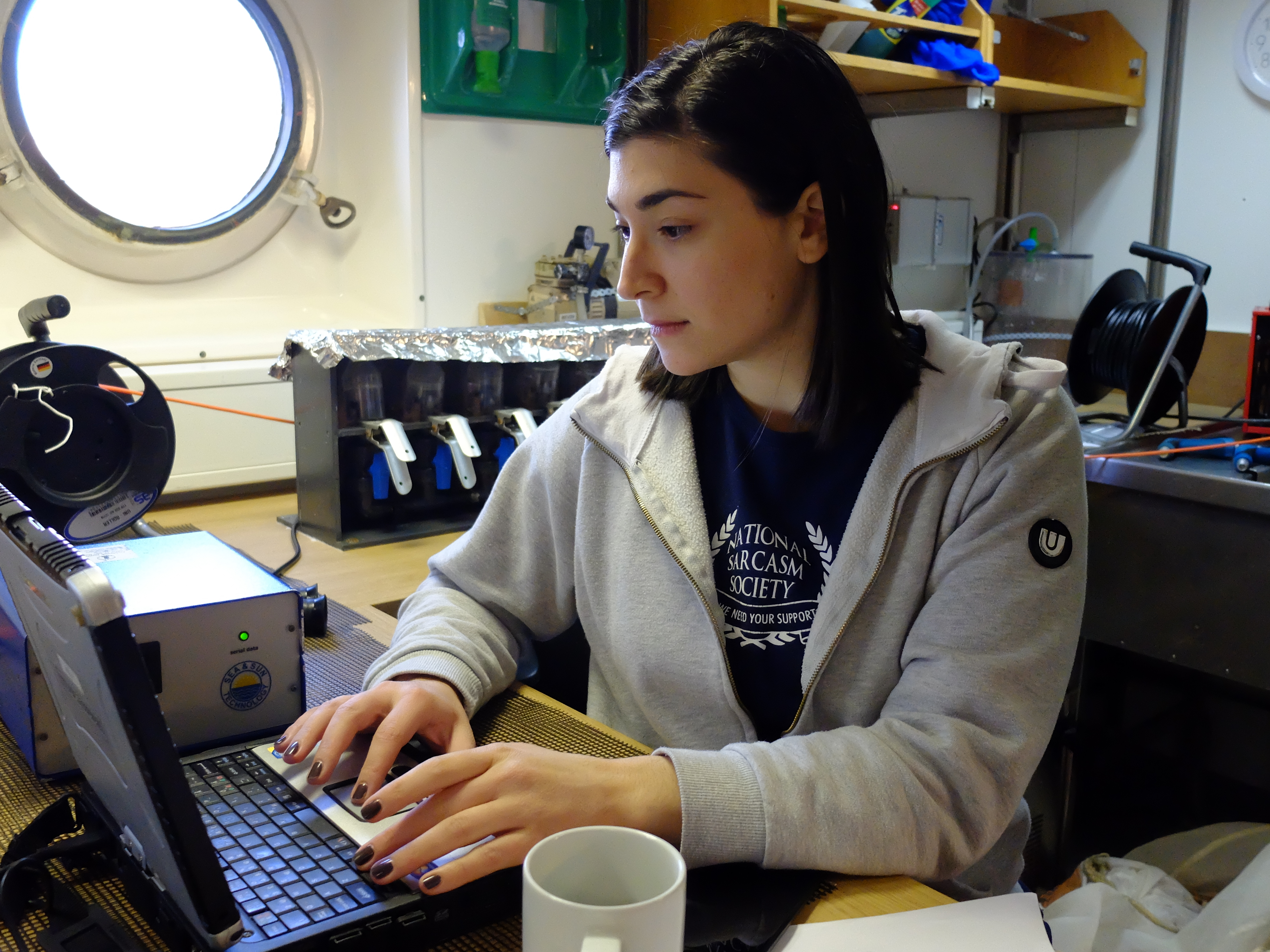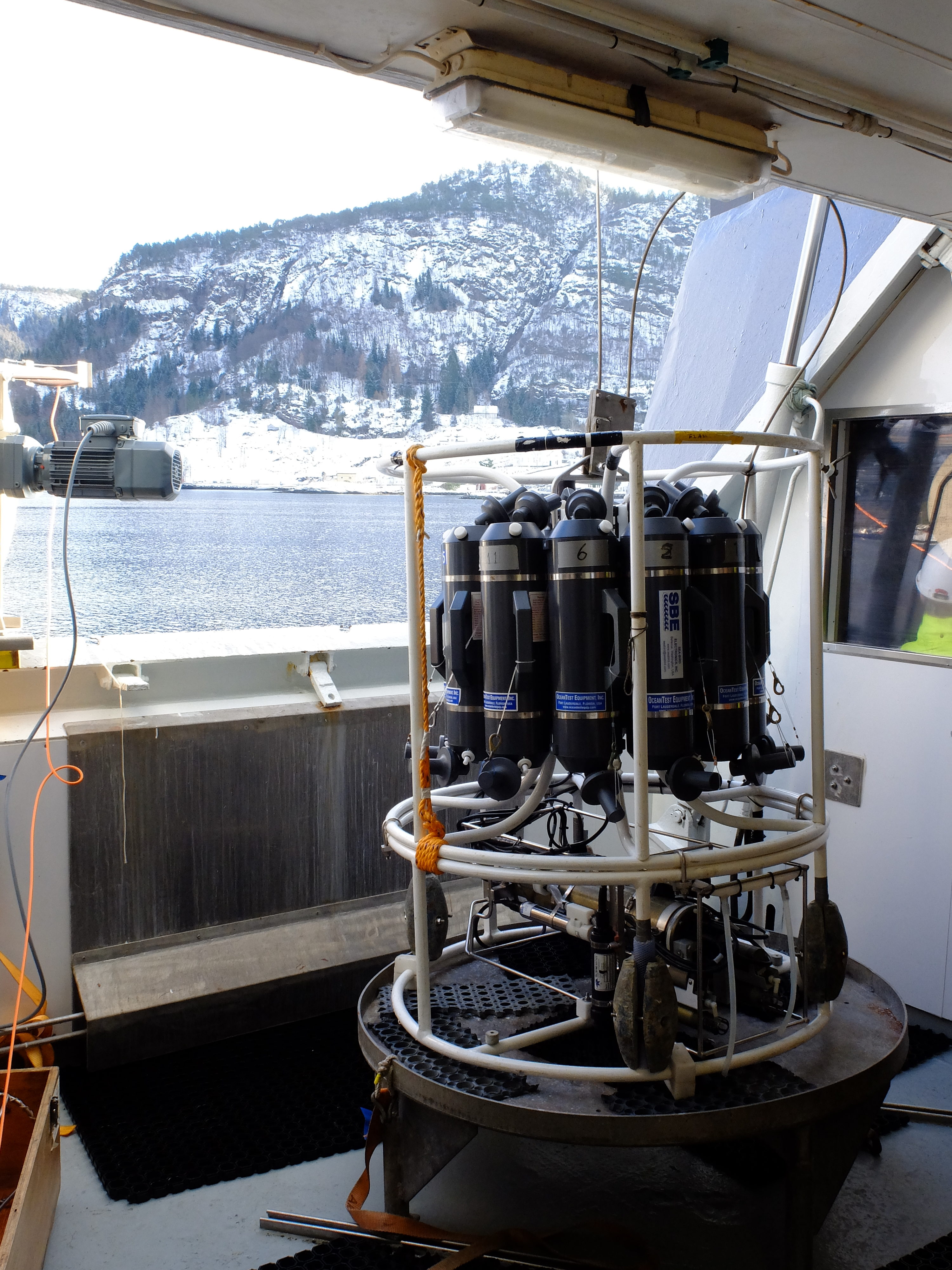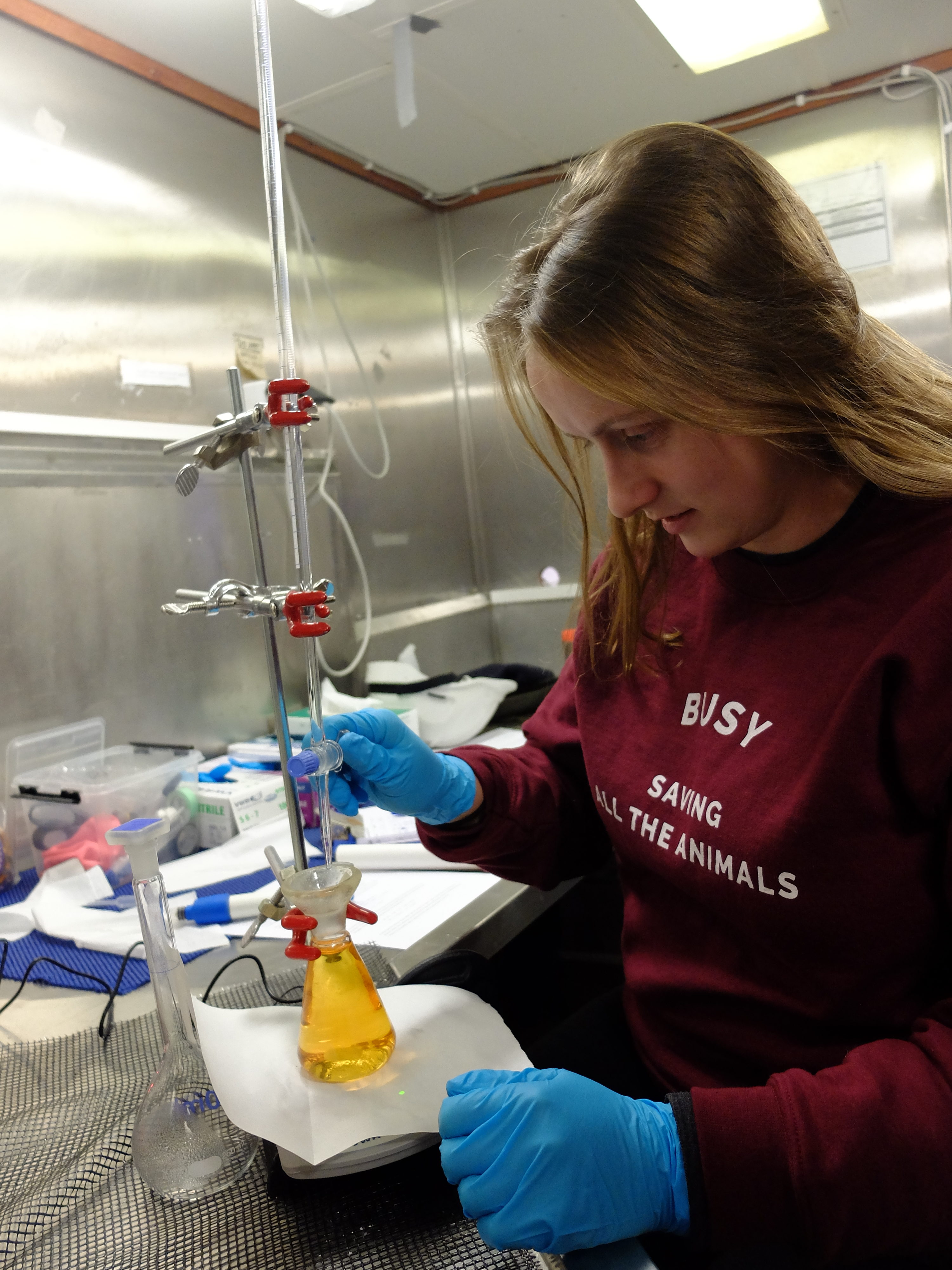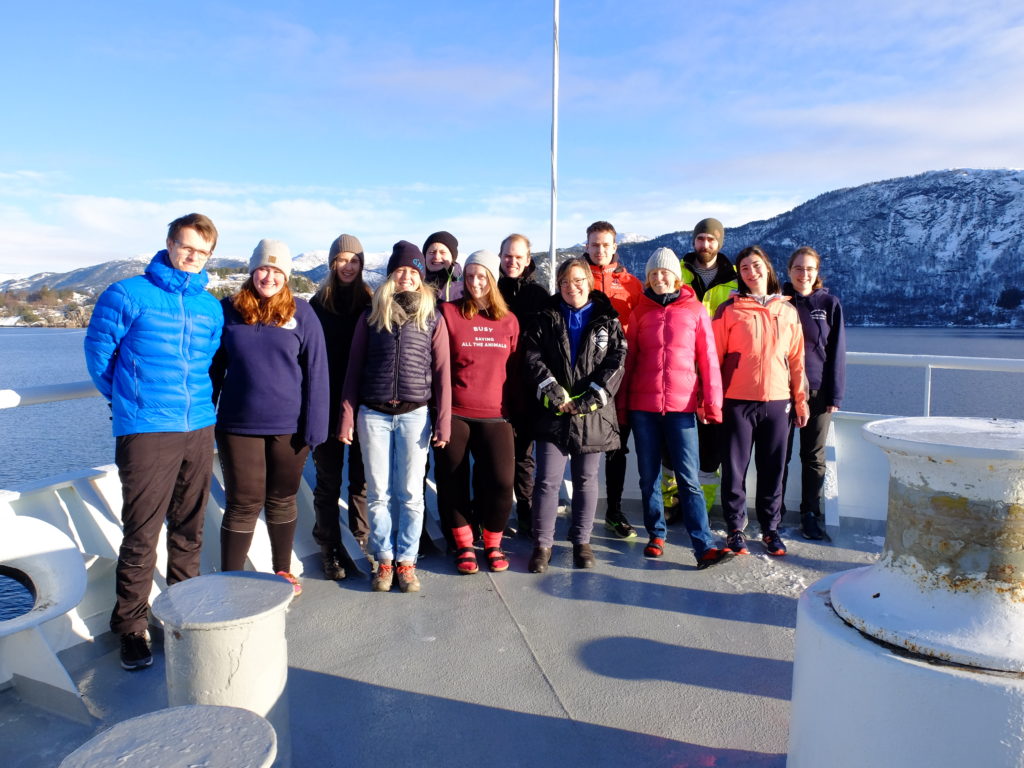A re-occuring theme on Team Elin is that we like to combine observations, tank experiments and modelling. So this week, Steffi and Mirjam (who both were been instructors on the recent student cruise) went to work on setting up a fjord circulation experiment to complement future student cruises (and to be used in other courses like GEOF105, too).
We now have an experiment that shows how a fresh, yellow inflow (representing the freshwater input into fjords close to their heads by rivers) flows over a initially stagnant pool of salt water. As the freshwater plume flows out of the fjord, it entrains more and more salt water from below, thus thickening and setting up a return flow that brings in more salt water from the reservoir (representing the open ocean) on the right.
We drop dye crystals to visualize the surface current going out of the fjord and the return flow going in, and draw the profiles on the tank to be able to discuss them later.
This experiment is really useful in preparation for a student cruise. Why is it interesting to look at a transect along Masfjorden like we did? Well, because we see in the tank that the freshwater layer should thicken the further away we get from the source. Why did we do the microstructure measurements on either side of, as well as on, the sill? Because there is a huge amount of mixing going on there, just introduced by the tides going back and forth! What would happen if river water was really funneled down to the bottom of the fjord to introduce oxygen to very low oxygen regions? It would introduce a lot of mixing, indeed! All this and more can be seen in this one experiment!
Watch the movie below, and then head over to Mirjam’s blog post about the experiment for more details. Enjoy 🙂

